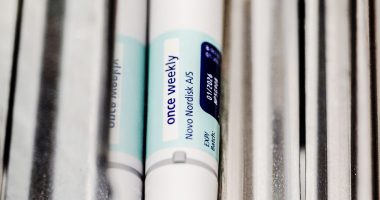SHOCKING footage shows the incredible moment lightning struck the launch pad of NASA’s new mega-rocket.
Four bolts hit the launch pad of Artemis I as a storm hit Florida’s Kennedy Space Center on Saturday.
The storm wreaked havoc as officials conducted a “wet dress rehearsal” for its Space Launch System rocket.
The rocket is fueled with more than 700,000 gallons of liquid oxygen and liquid hydrogen, the New York Times reported.
A countdown from 10 takes place but the rocket doesn’t take off as the engines are not ignited. The tanks are then emptied.
Three of the strikes were low intensity but the fourth hit one of Launchpad’s 39 lightning protection towers.
The towers have a fiberglass mast, while wires and conductors help divert lightning bolts away from the rocket.
Jeremy Parsons, deputy manager of the exploration ground systems program at Kennedy Space Center, said the fourth bolt was “the strongest we have seen since we installed the new lightning protection system”.
Sensors on the towers help determine the rocket’s condition after each strike.
Parsons said: “This configuration helps keep the rocket isolated from dangerous currents.”
The lightning strikes caused the wet dress rehearsal to be paused but the countdown was able to restart.
On Sunday, NASA bosses revealed they had “scrubbed” the wet dress rehearsal.
There was a problem with the ground equipment on the mobile launch platform, according to Space.
The issue was linked to the fans that create positive pressure near the launcher.
Charlie Blackwell-Thompson, launch director for NASA’s Exploration Ground Systems Program, told reporters that a breaker tripped causing a fan to malfunction.
‘TEST SCRUBBED’
NASA warned that hazardous gases could build up if the problem was not resolved.
Blackwell-Thompson said it didn’t appear that the fan issue was linked to the lightning strikes.
Parsons said the test provides engineers with “flexibility” to address issues that arise.
And, Mark Sarafin, Artemis’ mission manager, told reporters: “The team is prepared for this, we just need to get through a few technical issues.”
It’s hoped testing will restart on Monday. If engineers detect additional faults, then the “wet dress rehearsal” could stretch into Tuesday.
Blackwell-Thompson said: “After that, we’ll have to play it day by day.”
NASA says that Artemis I will help provide a “foundation for deep space exploration”.
It will be an uncrewed mission and it could launch in either June or July.
The launch date is set to be no earlier than June or July.
The Orion spacecraft will be on top of NASA’s Space Launch System as it’s thrust into space.
It will travel 280,000 miles from the earth during a four to six-week mission.


NASA scientists estimate that Orion will fly around 62 miles above the surface of the moon.
While in orbit, the spacecraft will collect data that will be sent back to Earth.
We pay for your stories!
Do you have a story for The US Sun team?












